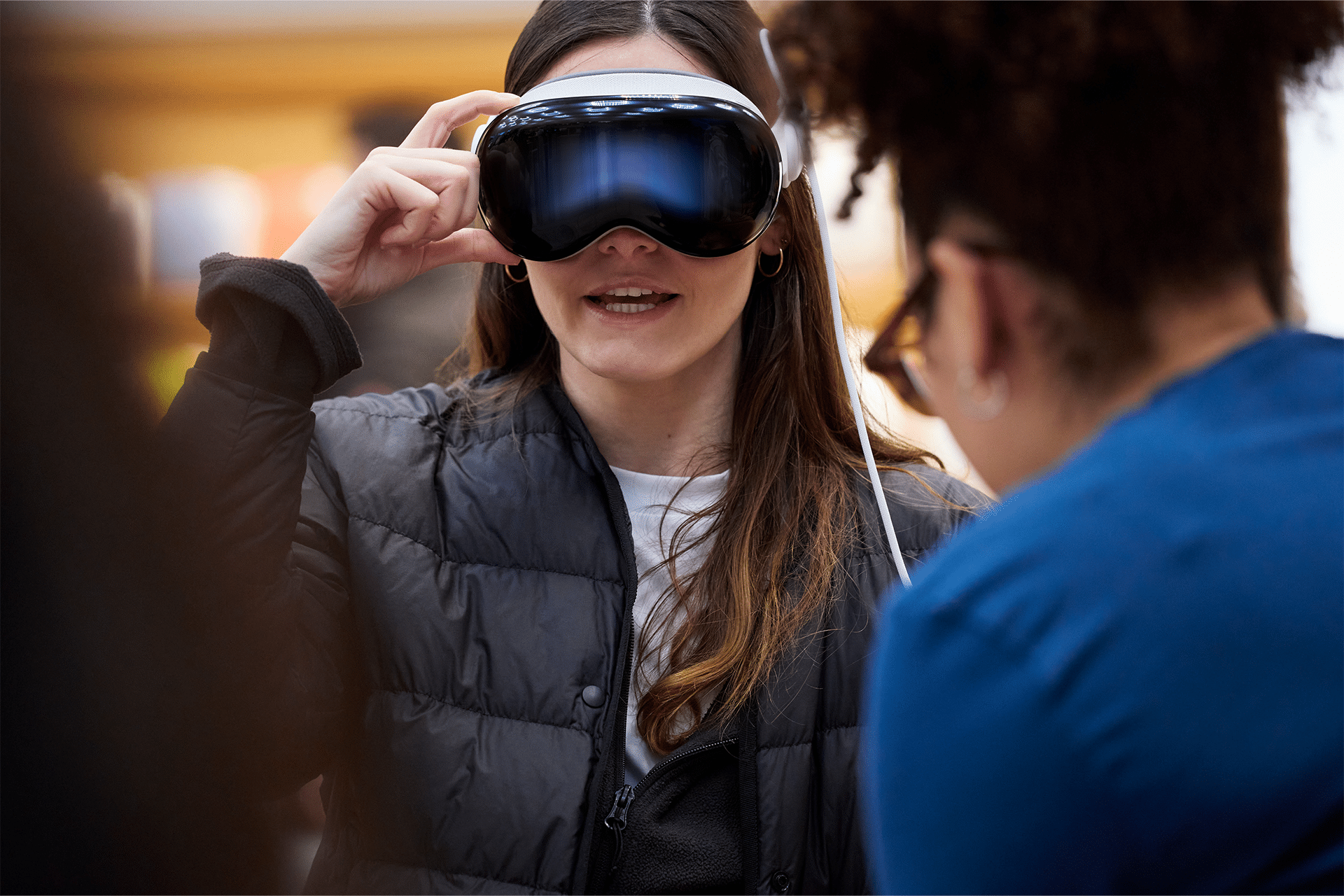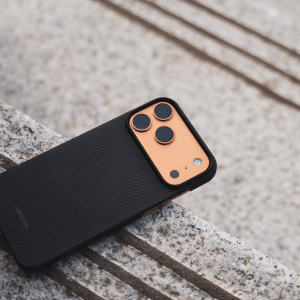Diners no longer need to flip through laminated pages or scroll through their phones. Instead, they can simply look at the restaurant tables, where dishes materialize in front of them before an order is placed.
This kind of immersion is more than a party trick. Industry forecasts suggest that the global AR market could surpass $ 140 billion by 2025, demonstrating the rapid adoption of this technology. Within the hospitality industry, digital spending is poised to increase significantly, and restaurants are at the forefront of this shift. The Vision Pro headset introduces high-fidelity visuals into casual dining, opening the door to touchless ordering, engaging storytelling, and a sense of novelty that diners crave. The future of food is not only about flavor but also about how it is presented through layers of technology.
Apple Vision Pro as a Spatial Dining Tool
Apple Vision Pro is not just another headset. It represents a new category called spatial computing, where digital elements blend naturally into the physical environment. For dining, this means menus no longer sit on paper but appear right on the surface of a restaurant table. The device enables customers to interact using only their eyes, hands, and voice, providing a natural way to explore dishes without needing to handle devices or menus.
Each eye receives more pixels than a 4K television, which provides AR menus with a level of detail sharp enough to make food appear realistic. Diners can see textures, portion sizes, and even the shimmer of sauces as if they were right in front of them. The headset runs on a battery that lasts around two hours, long enough for most meals, and it can also remain connected to power for longer dining sessions. Apple has carefully avoided branding it as a VR device, positioning Vision Pro instead as a socially acceptable tool for mixed reality. This makes it easier to imagine at the dinner table, where practicality and appearance matter just as much as performance.
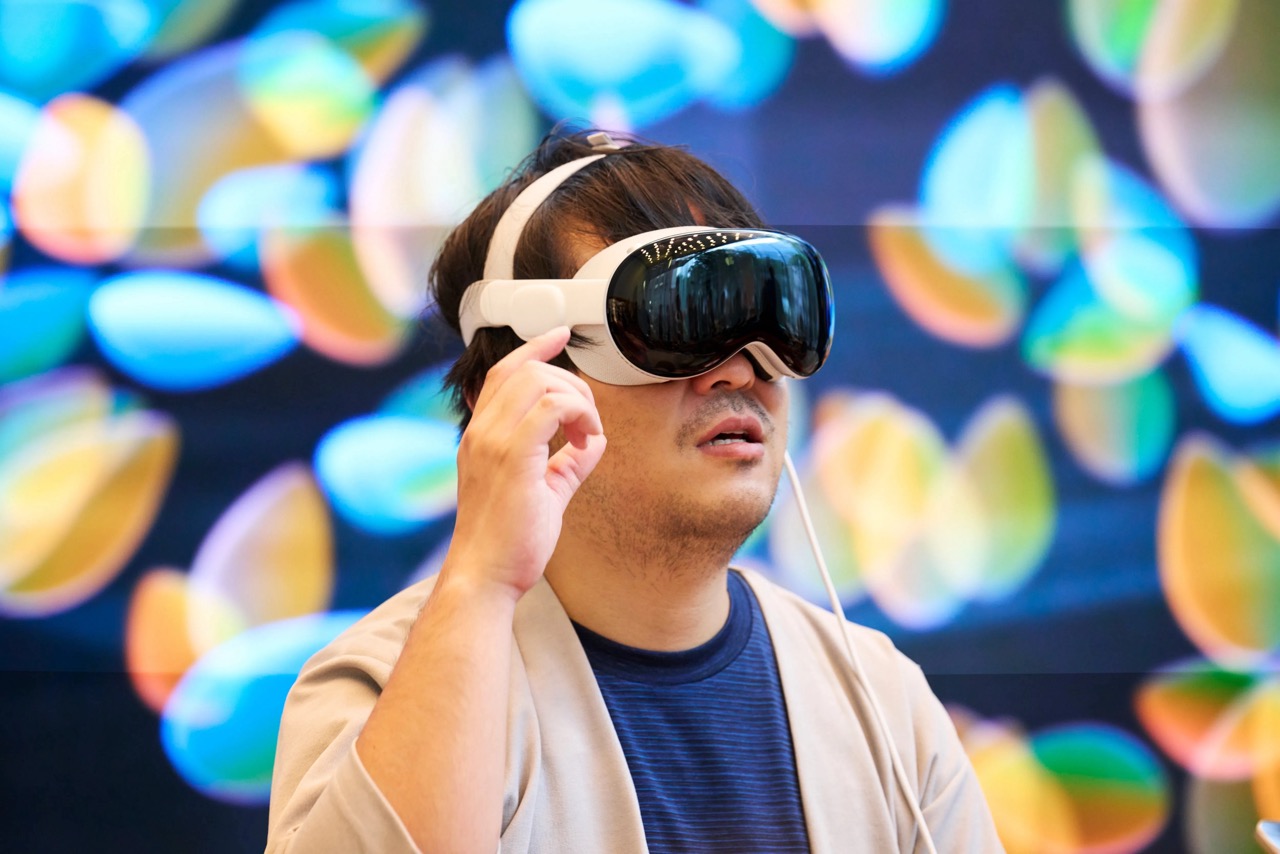
How AR Menus Appear on Restaurant Tables in Practice
In practical use, the system is surprisingly simple. AR QR codes or markers placed on tables activate the immersive menu, summoning three-dimensional models of dishes that diners can examine from every angle. Instead of reading text and guessing what a meal might look like, customers can see exactly how it will be plated before they order.
Creating these previews requires photogrammetry or advanced scanning, which captures authentic dishes in detail and translates them into lifelike digital objects. Restaurants can upload their scans to platforms that already integrate with Vision Pro, making the process more accessible than many expect. Diners don’t need to download extra apps. Scanning a code is enough to bring the AR menu alive. This not only streamlines the experience but also increases engagement, as customers are encouraged to explore the menu in more depth than they would with static descriptions.
Benefits for Diners
For guests, the immediate benefit lies in clarity. Viewing meals in 3D helps them understand portion sizes, textures, and how ingredients come together. This makes ordering easier, reducing the disappointment of unmet expectations. Customers feel more confident about their choices, which leads to higher satisfaction levels once the meal arrives.
The experience also carries an element of fun. Diners can share their previews on social media, turning meals into moments worth capturing. Younger audiences, in particular, find this interactive approach fresh and exciting. The system also helps those with dietary restrictions by visually highlighting ingredients and customization options. Beyond that, it supports inclusivity, offering intuitive visual cues that make menus accessible for people who face language or literacy barriers. The result is a dining experience that feels tailored, engaging, and welcoming to all.
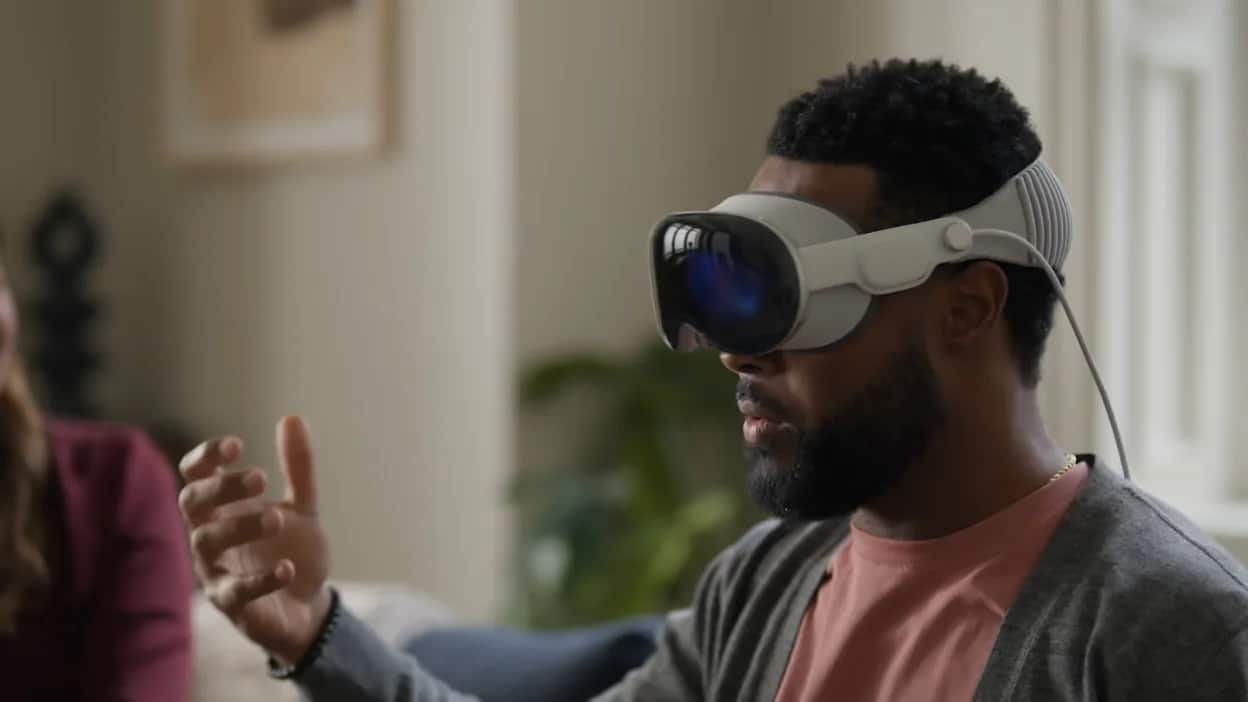
Advantages for Restaurants
From a restaurant’s perspective, adopting AR menus positions them as innovators. Guests perceive them as forward-thinking and modern, which fuels word-of-mouth buzz and press attention. The technology supports contactless ordering, reducing reliance on staff while meeting heightened expectations for hygiene and efficiency. At the same time, AR menus offer creative ways to build loyalty. Restaurants can embed promotions, reward systems, and upsell opportunities directly within the menu.
The visual element also encourages experimentation. Customers who might hesitate to try new items are more likely to take risks when they can preview dishes first. Restaurants can strengthen their branding by incorporating storytelling and design elements that align with their identity. Perhaps most importantly, AR menus open a new stream of data. Restaurants can see which dishes are viewed most frequently, how long diners spend exploring each option, and what ultimately converts into sales. These insights can inform menu design and marketing strategies, creating a loop of continuous improvement.
Creative & Emerging Use Cases
The possibilities extend far beyond static menu previews. Diners could one day build their own meals in AR, adding or removing ingredients and seeing the result take shape instantly. Restaurants might use overlays to tell the story of their food, introducing farms, fishermen, or vineyards through immersive visuals right at the table. Interactive kids’ menus could turn ordering into a playful activity, complete with animated dishes or food characters.
Gamification is another frontier. Restaurants could hide special menu items within an AR scavenger hunt or offer collectible digital experiences tied to certain dishes. Friends dining apart could join virtually, with synchronized menus creating a sense of shared experience. Seasonal dining could also receive a new dimension. Imagine a holiday menu accompanied by virtual table decorations, animated snowfall, or themed animations tied to specific meals. These ideas show just how versatile AR dining could become as adoption grows.
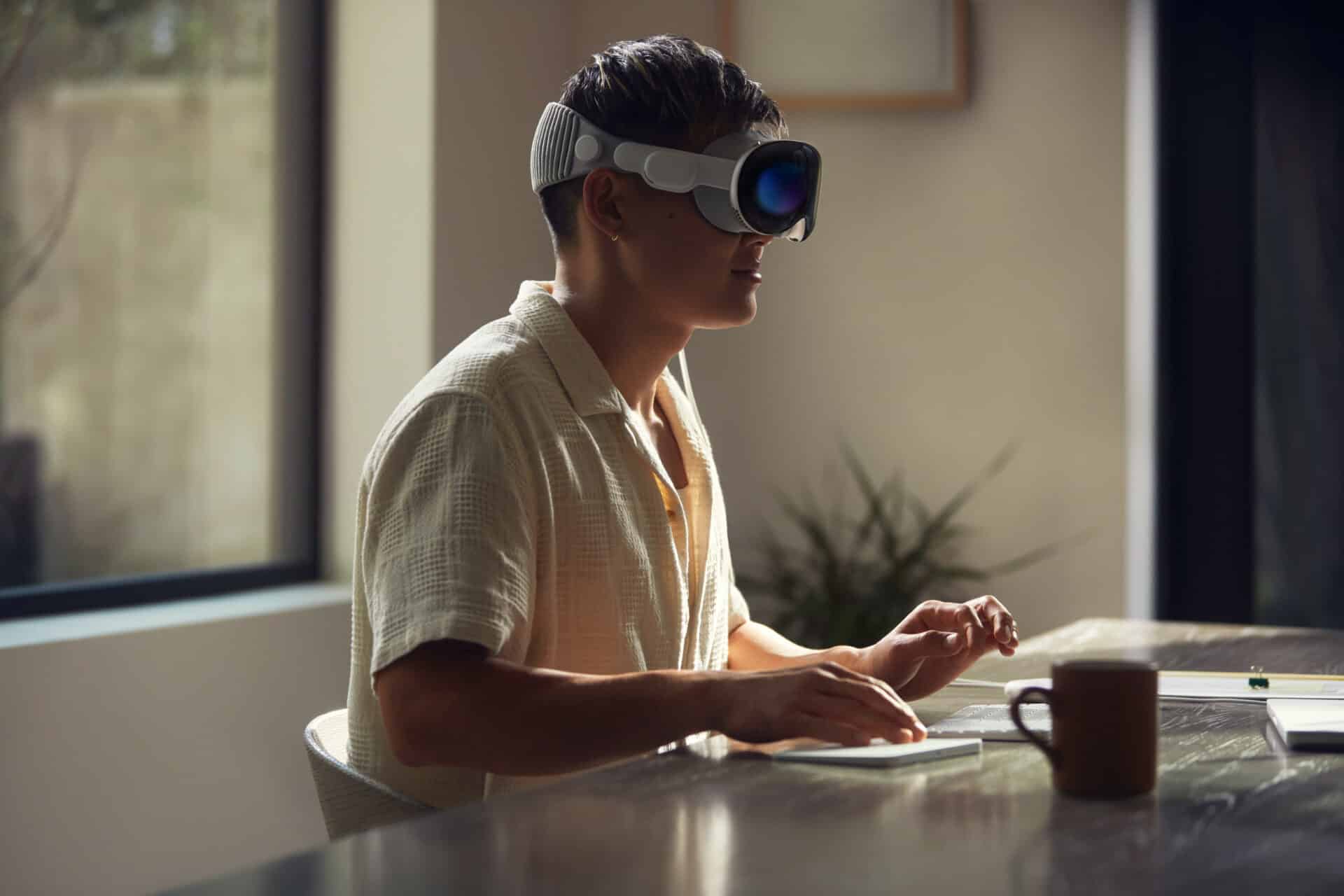
Challenges & Practical Considerations for AR Dining
Despite the excitement, practical issues remain. The Vision Pro headset is still a luxury product, which limits its availability. Not every diner will be comfortable wearing a headset at the table, and some may find it intrusive. For restaurants, the costs of building 3D assets and integrating them into systems can be significant. Staff also need training to manage the technology, ensuring it enhances rather than disrupts the dining experience.
Technical limitations such as battery life, headset hygiene, and reliable marker tracking present further hurdles. Accessibility is another concern, as not every customer is ready or willing to embrace AR technology. Most importantly, the system must work flawlessly. A restaurant cannot afford AR menus that lag, misalign, or fail to load in front of paying guests. Overcoming these obstacles will be crucial for AR dining to move from novelty to necessity.
The Road Ahead: AR Dining’s Future Trajectory
Looking forward, the potential is clear. As costs decline and AR technology becomes mainstream, Vision Pro-style dining experiences are likely to become widely available. Integration with artificial intelligence will allow personalized menus that adapt to a diner’s history, dietary preferences, and real-time choices. Ordering and payment could one day be handled entirely within AR, making the process smoother and faster.
Restaurants could also expand AR beyond the table. Guests can preview dishes from home before booking or explore takeout menus in an interactive format. Pairings like wine or cocktails could be enhanced with immersive visuals, and diners could even take virtual tours of farms or kitchens while waiting for their food. As spatial computing gains traction, AR dining is poised to shift from futuristic curiosity to everyday expectation.
Closing Remarks: Dining in the Age of Immersion
The rise of AR dining marks a significant transformation in the hospitality industry. Ordering a meal is no longer about glancing at a printed list of dishes, but about experiencing food visually and interactively before making a choice. Diners benefit from confidence, clarity, and entertainment, while restaurants enjoy stronger branding, new marketing tools, and valuable data. Apple Vision Pro brings the technology to a level where it feels polished enough to fit naturally into dining spaces.
The beauty of this shift lies in how it enriches both sides of the table. Customers enjoy a more satisfying and inclusive experience, while restaurants position themselves at the forefront of innovation. What once seemed futuristic is already taking shape, and the lines between physical and digital dining are blurring fast. In the near future, mealtime magic may not just come from the kitchen, but from the table itself, where digital menus spring to life, bringing dining into a new era of immersion.
